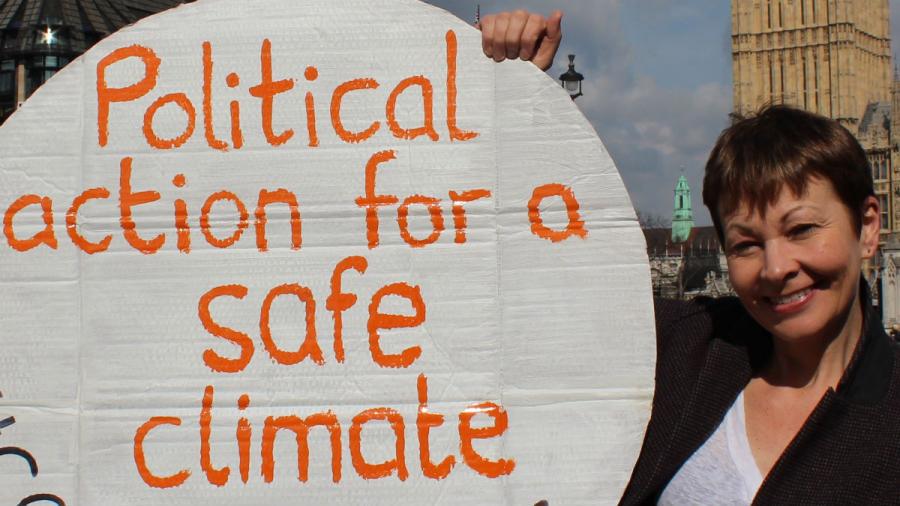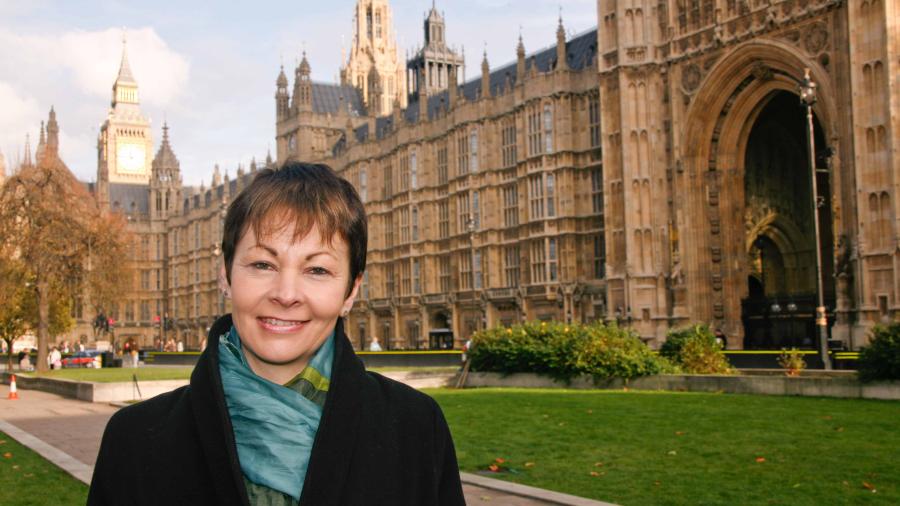The heat is on at the climate talks in Paris, as negotiations enter the final stages.
Last week, I asked some parliamentary questions to put pressure on UK Ministers to pull their weight and show some leadership on climate change.
These cover issues such as the 1.5 degree goal to prevent catastrophic climate change, and the need for the UK’s own carbon reduction targets to be radically more ambitious. We’re way off track to staying below 2 degrees at the moment. There’s more information about the background to these PQs on my earlier blog.
Earlier this week, I lobbied Ministers to put human rights to be at the heart of the Paris Protocol, and tabled a parliamentary motion on the Women’s Global Call for Climate Justice too.
More than anything, we should judge the UK Government’s success in rising to this historic opportunity to tackle climate change by its energy policy, funding decisions, and actions here in the UK – not just by what Ministers say in Paris.
Here are the answers – revealing the UK Government’s position on some of the key issues at stake in Paris:
1. Urging the Government to get real about the dangers of 2 degrees of warming; UK Ministers need to push for the Paris climate agreement to include a 1.5 degree goal.
Climate Change: International Cooperation
Asked by: Lucas, Caroline | Party: Green Party
To ask the Secretary of State for Energy and Climate Change, what information she holds on the number of countries calling for a commitment to limit global temperature increase to 1.5 degrees; what the Government's policy is on limiting the long-term global temperature increase to 1.5 degrees; and if she will make a statement.
Answering member: Andrea Leadsom | Party: Conservative Party | Department: Department for Energy and Climate Change
A number of countries are calling for a commitment to limit global temperature increase to 1.5 degrees, most notably through a new group called the Climate Vulnerables Forum. The Government supports the 'below 2 degrees’ objective, and recognises the need to keep the temperature rise as low as possible below 2C, including the possibility of staying below 1.5 degrees. We are pushing for the highest possible mitigation ambition in the new agreement.
Asked by: Lucas, Caroline | Party: Green Party
To ask the Secretary of State for International Development, what assessment she has made of the effect of (a) 1.5, (b) 2, (c) 4 and (d) 6 degrees of global warming on (i) countries belonging to the Climate Vulnerable Forum and the Alliance of Small Island States and (ii) the achievement of the Sustainable Development Goals; and if she will make a statement.
Answering member: Mr Nick Hurd | Party: Conservative Party | Department: Department for International Development
The Intergovernmental Panel on Climate Change (IPCC) has produced detailed assessments of the effect of global warming. Its study on Climate Change Impacts, Adaptation and Vulnerability contained in the 2014 Fifth Assessment Report (available here: http://www.ipcc.ch/report/ar5/wg2/) makes clear how the impacts of climate change are expected to slow down economic growth, erode food security and make poverty reduction more difficult. The report notes that higher levels of warming increase the chance of severe and pervasive impacts.
Asked by: Lucas, Caroline | Party: Green Party
To ask the Secretary of State for Energy and Climate Change, how many Intergovernmental Panel on Climate Change scenarios for keeping global temperatures below two degrees require (a) negative emissions technologies and (b) peaking of global emissions before (i) 2015 and (ii) 2020; and if she will make a statement.
Answering member: Andrea Leadsom | Party: Conservative Party | Department: Department for Energy and Climate Change
Of the 204 emissions scenarios included in the IPCC’s Fifth Assessment Report database with climate model projections which are consistent with a more than 50% chance of keeping global warming below 2 °C by 2100:
(a)177 of these include negative emissions technologies; and
(b)noting that the scenarios do not consider emissions in 2015, but rather for each decade:
(i) 111 of the scenarios require emissions to peak by 2010; and
(ii) 46 additional scenarios require emissions to peak by 2020.
The remainder either do not report total emissions (11) or peak after 2020. The general features of the scenarios in this database show that delaying strong action to reduce emissions would increase the risk of exceeding 2 °C of warming and associated impacts, and require deeper emissions cuts in the future and/or a heavier reliance on negative emissions technologies at scale. This is why the Department is seeking ambitious global action on climate change in Paris.
2. Pressing UK Ministers to admit that their current targets to cut carbon emissions are woefully inadequate and need to be much more ambitious if we’re going to do our fair share of avoiding the worst impacts of climate change.
Asked by: Lucas, Caroline | Party: Green Party
To ask the Secretary of State for Environment, Food and Rural Affairs, what projection she has made of a global temperature increases by (a) 2050 and (b) 2100 caused by greenhouse gas emissions trajectories (i) under current trends and (ii) if all Intended Nationally Determined Contributions are delivered; what the implications of such temperature rises are in the UK for (A) coastal towns and cities, (B) extreme weather events and (C) food security; and if she will make a statement.
Answering member: Rory Stewart | Party: Conservative Party | Department: Department for Environment, Food and Rural Affairs
The Department of Energy and Climate Change and Defra have supported the AVOID Research Programme to project long-term climate change scenarios to understand how emissions reductions translate to global average surface temperature change. Based on a snapshot of the Intended Nationally Determined Contributions (INDCs) pledged by 1 October 2015, with an assumed continuation of comparable global emissions reduction to the end of the century, this analysis projects:
(a) (i) by 2050, with continued rise in global greenhouse gas emissions, warming of between 2.3˚C and 2.6 ˚C;
(ii) by 2050, if all INDCs are delivered and continued, warming of 2˚C;
(b) (i) by 2100, with continued rise in global greenhouse gas emissions, warming of between 4.2˚C and 5.2 ˚C;
(ii) by 2100, if all Intended Nationally Determined Contributions are delivered and continued, warming of 3˚C.
All of these estimates are temperature changes relative to pre-industrial global average surface temperature and best estimates of the climate’s sensitivity to increasing greenhouse gas concentrations.
Under the Climate Change Act 2008, the Government has a statutory role to produce, on a five-yearly cycle, an assessment of the risks and opportunities for the UK arising from climate change. The first Climate Change Risk Assessment (CCRA) was published in 2012. It included consideration of impacts on our coastlines, on the frequency and severity of extreme weather, and on our food production. The CCRA used the 2009 UK Climate Change Projections to assess risks under different emissions scenarios up to the 2100s.
The National Adaptation Programme report which Defra published in July 2013 sets out how we are preparing for the impacts of climate change. This sets out more than 370 actions across key sectors involving government, business, councils, civil society and academia.
Work is underway on the second CCRA, which will include an up-to-date review of evidence on the effects of climate change. The CCRA Government Report and the associated evidence report will be published in January 2017. These will inform the next National Adaptation Programme due around 2018.
The Global Food Security programme recently launched a joint research council five-year £15 million research call on resilience of the food supply chain, in partnership with Defra and the Food Standards Agency.
3. Challenging the Government on the contradiction between their warm words on climate change and their actions at home (e.g. cutting support for renewable energy whilst granting tax breaks for fracking), which fly in the face of the need to leave most existing fossil fuels reserves in the ground.
Asked by: Lucas, Caroline | Party: Green Party
To ask the Secretary of State for Energy and Climate Change, what estimate she has made of the proportion of existing fossil fuel reserves that are (a) unburnable under a scenario of keeping temperature increases to below two degrees C and (b) unburnable; and what her policy is on the proportion of primary energy supply (i) in the UK, (ii) globally that should come from oil and gas in (A) 2030 and (B) 2050; and if she will make a statement.
Answering member: Andrea Leadsom | Party: Conservative Party | Department: Department for Energy and Climate Change
The International Energy Agency has suggested that around a third of global fossil fuel reserves are burnable under a 2°C scenario.
In the UK, we are committed to implementing the Wood Review recommendations to maximise economic recovery of oil and gas in a way that is compatible with our climate change targets. Maximising recovery both in terms of increasing efficiency of production, as well as increasing levels of production of the UK’s oil and gas, will help maintain security of supply as well as boost growth and jobs.
This Government remains committed to the Climate Change Act and to meeting our climate change target of an 80% emissions reduction by 2050. This will mean reducing the amount of fossil fuels we use – through improved energy efficiency and increased supplies of low carbon energy - as well as reducing other sources of emissions. As part of our efforts to reduce emissions I have already announced that the Government will consult on proposals to end coal power generation by 2025 and restrict its use from 2023.
Asked by: Lucas, Caroline | Party: Green Party
To ask Mr Chancellor of the Exchequer, what the Government's policy is on the appropriate percentage rate of return on investment for (a) schools and community groups investing in on-site solar power and (b) foreign state owned companies investing in new nuclear power in the UK; and if he will make a statement.
Answering member: Greg Hands | Party: Conservative Party | Department: HM Treasury
We want to attract cost-effective investment in infrastructure. Investors rightly expect a market rate of return and value for money is achieved through competition and careful negotiation. Individual project rates of return will differ to reflect, among other things, the risk profiles involved.
The Feed-in-Tariff scheme, for which schools and community groups are eligible to apply, aims to offer rates of return for solar installations between 4% and 8%. Returns for each installation will vary according to their individual costs and the amount of electricity generated and used on site. The Government’s recently closed consultation on the scheme includes a review to ensure that tariffs are within this range, given the fall in costs of solar panels in recent years. It will detail its response to the consultation shortly.
We are unable to disclose the anticipated rate of return for new nuclear transactions as these are commercially sensitive.
Gas Fired Power Stations: Construction
Asked by: Lucas, Caroline | Party: Green Party
To ask the Secretary of State for Energy and Climate Change, if she will make an assessment of the effect of replacing the UK's existing coal fired power stations through a combination of energy conservation, demand side measures and renewable power instead of new gas fired power stations on (a) job creation, (b) carbon emissions, (c) household energy bills, (d) long-term energy security and (e) the UK's global influence on securing international action on climate change; and if she will make a statement.
Answering member: Andrea Leadsom | Party: Conservative Party | Department: Department for Energy and Climate Change
The Department will be launching a consultation in the spring on the closure of unabated coal fired power stations. This will include an impact assessment, and I encourage the honourable lady to examine these documents when published next year
Asked by: Lucas, Caroline | Party: Green Party
To ask the Secretary of State for Energy and Climate Change, what the size of the (a) solar, (b) wind, (c) offshore wind and (d) renewable heat sector is; and by what proportion she plans for these sectors to grow in the next (i) five, (ii) 10 and (iii) 20 years; and if she will make a statement.
Answering member: Andrea Leadsom | Party: Conservative Party | Department: Department for Energy and Climate Change
The latest available data on the size of the low carbon sectors is published in a BIS report on 'The size and performance of the UK low carbon economy’. The report contains estimates on turnover, Gross Value Added (GVA), number of firms and number of jobs supported by various low carbon sectors. These estimates are presented in Table 1 below.
Table 1: Size of the solar, wind and renewable heat sectors in 2013
Sector | Number of firms | Number of jobs | Turnover (£m) | Gross Value Added (£m) |
Solar | 2,400 | 34,400 | 8,400 | 3300 |
Wind | 500 | 32,700 | 9,800 | 2,700 |
Onshore | 300 | 19,000 | 6,300 | 1,700 |
Offshore | 200 | 13,700 | 3,500 | 1,000 |
Renewable heat | 2,300 | 86,000 | 37,600 | 17,500 |
Total | 5,200 | 153,100 | 55,800 | 23,500 |
Note: Renewable heat includes the following sectors: Energy generation from waste and biomass, biomass equipment, geothermal, heat pumps, solar thermal, heat networks and alternative fuels. Some categories also include activity not relating to renewable heat. Jobs, turnover and GVA include supply chain activity.
Source: BIS (March 2015) “The Size and Performance of the UK Low Carbon Economy
Future growth in these sectors will depend upon a number of factors, such as technological development and cost reduction.
The Renewable Heat Incentive (RHI) budget to cover both domestic and non-domestic schemes has been confirmed to March 2021, with funding rising each year to £1.15bn in 2020/21. We believe that this is sufficient to heat the equivalent of 500,000 homes. We are planning to reform the RHI with a particular view to improve value for money, reduce cost and improve cost control.
4. Carbon emissions are making oceans more acidic. Scientists recently warned that a 2C maximum temperature rise for climate change agreed by Governments will not prevent dramatic impacts on ocean systems - yet another reason why we need action to keep global warming to 1.5 degrees or less.
Seas and Oceans: Acidification
Asked by: Lucas, Caroline | Party: Green Party
To ask the Secretary of State for Environment, Food and Rural Affairs, what her policy is on the level of atmospheric carbon concentration required to prevent harmful ocean acidification; what assessment she has made of the effect of ocean acidification under atmospheric carbon concentration scenarios used by the Intergovernmental Panel on Climate Change on (a) marine species and (b) coastal populations; and if she will make a statement.
Answering member: George Eustice | Party: Conservative Party | Department: Department for Environment, Food and Rural Affairs
Defra and DECC have together supported the UK Ocean Acidification Programme to better understand the impacts of climate change on our seas.
Although we are still awaiting the final summary report, outputs from the programme point to a complex range of effects on marine species and ecosystems resulting from the interplay between acidification and temperature increase. The economic effects on coastal populations are uncertain at this point though preliminary work indicates they are likely to be increasingly negative as the century progresses.
However, by reducing emissions in line with the stringent emissions scenario produced by the Intergovernmental Panel on Climate Change (Representative Concentration Pathway 2.6) which is consistent with keeping mean global temperature increase below 2°C, we would significantly increase the options for protection, adaptation and repair of the ocean.
This is why the UK Government is seeking ambitious global action on climate change this month in Paris to protect our oceans in the future.




Join The Discussion